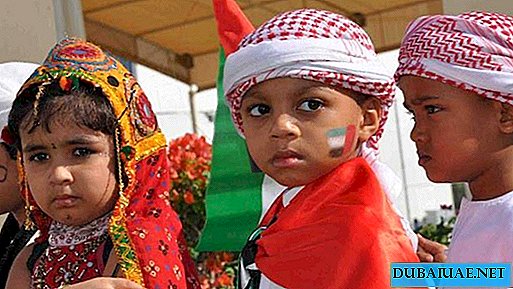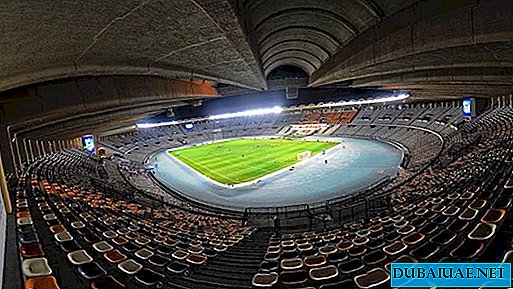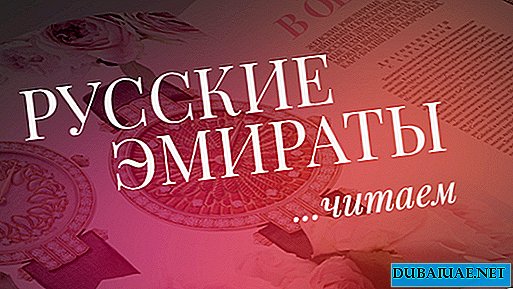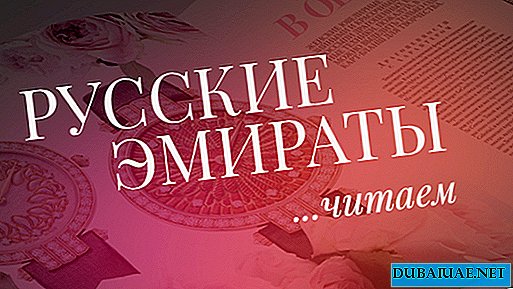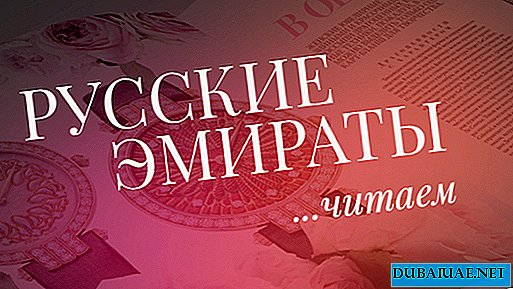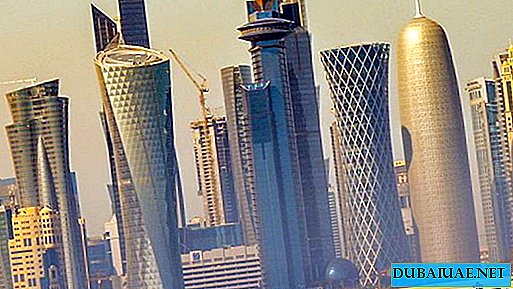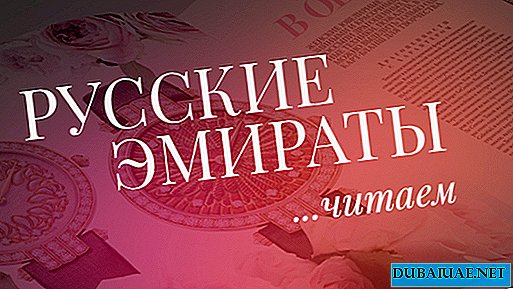 TODAY'S ART SPACE OF THE EMIRATES IS FILLED WITH PAINTINGS, SCULPTURES AND INSTALLATIONS CREATED IN MIXED GENRES. ABOUT THE MOST BRIGHTEST STARS - IN OUR TODAY'S REVIEW.
TODAY'S ART SPACE OF THE EMIRATES IS FILLED WITH PAINTINGS, SCULPTURES AND INSTALLATIONS CREATED IN MIXED GENRES. ABOUT THE MOST BRIGHTEST STARS - IN OUR TODAY'S REVIEW. Khalil Abdulvahid: “It is important to work for art”
Dubai-based artist Khalil Abdulvahid began his creative career at the Hassan Sharif Atelier of Free Art, created in the 1980s. He was so inspired by creative discoveries that he decided to devote himself to the art education of the younger generation and to perfecting his own skills. Today, in addition to training beginner artists, Khalil also works in the visual arts sector of the Dubai Culture Committee, where he is involved in many initiatives.
His career consists of two "routes" - painting and video. Khalil's paintings are well recognizable due to the use of powerful colors and dark tones, however he still continues to experiment.
What has had the greatest impact on your creative choices?
Of course, my work is in the studio of Hassan Sharif. I do not think that I would have taken place in creativity without going this way. He taught us to enjoy creativity and, importantly, to work for the sake of art in its purest form. Thus, he inflamed my passion and helped me get deeper into the work, and also instilled a sense of duty to the future generation.
How did you find your style in painting?
Everything went on as usual. Today I use a lot of dark colors, especially to create the background. Not because I went through the darkness. Just with a dark background, light or white colors truly glow. I want the viewer to share my passion with me.
What elements are needed to develop art in the UAE?
To a certain extent, the art scene shows natural and rapid growth, but we need to create infrastructure for young artists and, of course, provide them with access to education. Among us there are enough people who are passionate about art, who must control the process and not lose sight of a single detail. The question is not what we need, but how to do it better. We want to bring our artists to the international level.
Azza Al Kubaisi: "Jewelry allows me to tell a story"
Most often, she is called the first emirate jewelry designer, but in fact, Azza Al Qubeisi is also an artist and entrepreneur, and, importantly, a caring wife and loving mother. Azza graduated from Guildhall University of London in 2002 and returned to Abu Dhabi, where she taught jewelry design workshops. After the state announced a program to support local talents, it created the “Made in the UAE” platform and opened its own boutiques in shopping centers. Her products and sculptures are made of gold, silver, palm trees, tires and even incense. Believing in the future of his country, Azza Al Qubeisi uses materials traditional for her culture, giving her inspiration and allowing her to keep her roots.
Why did you decide to study jewelry?
I specifically preferred his sculptures, because I wanted to learn craftsmanship and translate my ideas on my own, without anyone else's support. On the other hand, jewelry allows me to tell a story. In addition, it was very important for me to pave the way for local designers and let them feel that they have something to rely on.
Your work reflects local culture. Is your personality revealed in them?
Yes. This all comes down to. In 2008, I realized that all I am doing is trying to understand who I am. I was always touched by the story of my grandmother, her survival.
She rode a camel, kept the household and took care of 10 children. Today, nothing of what surrounded her in everyday life no longer exists. This is interesting, on the one hand, and strange, on the other, but my grandmother, who is still alive, does not say anything about it. I believe that these stories allow me to move forward.
Since 2011, you have been creating installations with palm trees. Tell us about it.
Culture in the general sense is the interaction of a person with the environment. If we do nothing for ourselves, then who are we? My work is not only a craft: it is reunion and gratitude.
They show how people survived in the past, how we can live in the future and do something today to be emirates. We can develop and be interesting for other nations, but at the same time maintain our own style. This is part of my philosophy, understanding who I am and where I am moving.
 Abdul Kader Al Rais: "I am happy that my work is studied at school"
Abdul Kader Al Rais: "I am happy that my work is studied at school"
One of the most famous emirate artists Abdul Kader Al Rais began his career even before the formation of the UAE, in 1964. He was a pioneer in the field of visual art in the Gulf countries, still continues to improve his style and now acts as a mentor for future generations. At one time, he became one of the founders of the UAE Society of Fine Arts and won countless prizes, including the first ever Sheikh Khalifa Prize in the field of art and literature.
In his landscapes - an accurate description of nature and innate energy. Abdul Kader Al Rais has been participating in exhibitions around the world since 1965, and today no collection of Arabic art can do without his works.
When did you start drawing?
In 1965, when I was 14 years old. I was sent to Kuwait, and there I found the albums of Raphael, da Vinci and Rembrandt. I did not know how to read English, so I just looked at the photos. These works struck me. Later I learned about Monet and Pissarro, and since then I love impressionism. By 1968, I had already decided on my own style.
You paved the way for the younger generation. Feel your responsibility to him?
Yes of course. I sometimes attend schools or invite children to my studio. I received talent from God and do not get tired of thanking Him that He allowed me to become an example for imitation of youth. I am very happy that children study my work at school.
What has radically changed the art market in the UAE?
The opening of Christie's auction house, the appearance of Art Dubai and Abu Dhabi Art fairs, of course, the construction of the Cultural District on Saadiyat Island. Over the years, nothing happened at all. But suddenly everything changed!
 Zumaia Al Suwadi: "My art is my diary"
Zumaia Al Suwadi: "My art is my diary"
The Emirate artist Sumaya Al Suwadi did not choose digital art as her vocation - she herself chose it. From the age of 16, even before she got a computer, she uses programs as a means of self-expression. In her paintings - many attributes of mysticism, which can be seen in portraits of women with disproportionately large eyes. Zumaia also holds charity art festivals, where he acts as a curator. In addition, she does not abandon the profession of a fashion designer and the owner of her own boutique.
How did you get involved in art?
My cousin studied graphic design at a college in Dubai, and I seem to have been "infected" by her. I was 16 years old, and I was completely fascinated by digital art. I begged my parents to buy me a computer, and when my dream came true, I installed Photoshop and started experimenting, blogging.
Why do you draw women with big eyes?
I wanted to create my own style. When I started, in the UAE there were very few artists painting with computer technology. My works cannot be called either Arab or Emirate - they are universal, this is my own trademark. I enlarged my eyes and people began to think that these images looked like me.
That is, in your work there is an element of self-portrait?
Not at all. I am driven by passion or personal stories. My art is my diary. This is the place where I come when I want to take a break. This is a kind of punching bag. I am a busy woman with a bunch of daily problems. My emotions find a way out in my art. Sometimes I cry when I draw, and, you know, such works are sold instantly.
Lamia Gargash: “I like to explore spaces”
Lamia Gargash, a young artist with a shy smile, overcame many obstacles before achieving success on the art scene. While still studying at St. Martin's College in London, she began to study empty home spaces and in 2004 signed a contract with The Third Line Gallery in Dubai. Only in 2012 she gained authorial confidence and developed her own style worthy of major festivals. Lamia works with a medium format camera and in the genre of analog cinema.
Your series of photographs "Through the Looking Glass" has gained extraordinary popularity. Tell us about her idea.
I am a very shy person, and I had to fight this. I just wanted to talk about my idea very simply - because this is what I encounter every day. The process took a lot of time: first you had to find models that could talk about their insecurity, and then bring them into the right space and organize the shoot. When people first saw my work, they said that I could do it in Photoshop, but my idea was different.
The rest of your work is devoted to home spaces. Is that your style too?
I really like to explore spaces. My connection with them is something bewitching. I like the individuality of space, the fact that it belongs to a certain time, but it is not fixed anywhere. I am interested in the nature of time and the identity of home spaces.
Are you going to continue to do photography?
Not at all. I loved analog photography because I liked the waiting process, but I'm not going to stop there. In fact, I tried to escape from photography in order to get a more profitable profession. But wherever I move, I always came across photo business.
Mattar bin Lahej: "My style is movement"
A truly eminent artist, sculptor, owner of his own gallery, Mattar ben Lachezh, before becoming a star in the local art scene, hid in the studio for 16 years and conducted experiments. Only after many years, the master managed to find the necessary tools and materials to express his ideas. His unique style is reflected in the eternal movement - both in painting and in sculpture. Every year, his large-scale works are exhibited during Ramadan at The Dubai Mall.
In his gallery Marsam Mattar over the past 10 years, master classes have been held for more than 1,200 students. The new plans include bringing art education to the institutional level.
Who inspired you to do art?
My mum. When I was 13 years old, she had a dream that one day I would be connected with gold. I still remember this day. The second dream is my own. I always dreamed of becoming a professional artist, and now I live in this dream.
How do you define your style?
In a word - movement. This is the name of the next chapter of my life. If there is no movement in the picture, it is not for me. Life is constantly changing, and we are changing with it. The movement of ideas in my head never stops, and I want to show it to people. I do not want to imitate anyone.
You have your own gallery. What are your suggestions for the development of contemporary art in the UAE?
We must understand that not every artist is real. We have a lot of people who draw, but we need a filter to filter out real talents. It is important to maintain art at the proper level in our country, although we are expanding rapidly.
Jalal Luckman: "I portray emotions"
20 years ago, Jalal Luckman was the first digital artist in the UAE. Today his works from mixed techniques - canvases, sculptures and installations - are full-length, ambitious and even aggressive. He works with wood, aluminum, glass and galvanized steel in an attempt to express “raw” emotions that cannot be put into two dimensions. In his workshop in the metropolitan area of Mussaf, he created a 10-meter sculpture of the Invisible Giant and the Hint of a Smile - the very Mona Lisa with a beard that still adorns the entrance to the Manarat Al Saadiyat Gallery. Since 2008, he annually conducts art tours, in which artists of different nationalities can explore the landscapes of the UAE.
Why did you switch from digital to mixed?
I felt like I was missing out on something important. My work just talked, but had to scream, so I changed the genre. It was very natural for me. I can visualize and create the third dimension - and this undoubtedly works to my advantage.
Do you agree with the statement that your work is sinister?
Not all of my works are dark, but people label them that way because they express aggression. Those who know me understand the nature of my work. While others are wrapping their products in a glamorous wrapper, I look at something "raw." Be it love, hate, lust, greed, happiness or sadness - I get inner inspiration and portray emotions.
Do you feel the responsibility of the artist?
Both voices and stories should not be censored - we must be honest with the present day and emphasize the importance of emirate expression, especially when we lose our identity so quickly. The government is building the Louvre, but they will not educate three-year-olds. This is our responsibility. We must grow art from the roots.
Maysun Al Saleh: "Creativity has no boundaries"
The young artist Maysun Al Saleh defines his own style as surrealism. In her paintings, one can often find skeletons of people and animals. Maysun started painting at the age of eight, and in 2010 received a degree in designer at the University of Zayed. The first solo exhibition was held in 2010 at the Maraiya art center in Sharjah, and one of the first sales was the diptych “Para” - an image of male and female skeletons in national Emirate wedding wear.
In 2013, at The Ara Gallery in central Dubai, the artist presented the exhibition The Dara Chronicles - a collection of works made in mixed media using X-rays and vintage suitcases: she dedicated it to the liner that sank in the Persian Gulf in 1961. Grandfather Maysun was one of the few who survived the disaster.
What emotions do you express in your work?
My works have a sense of humor - this is clearly visible in a series of skeletons, despite the fact that the theme of death is played out in it. Creating the series The Dara Chronicles, I was absorbed in the tragedy with the liner, which affected my family. I dived there with scuba gear and painted right under the water. Actually, I am inspired by real stories - both those that I read in newspapers and those that my loved ones tell me.
Where do you see the boundaries of creative freedom?
There are no boundaries, I express myself as I want. This is total freedom.
What materials do you use and why?
It depends on the concept of work. I choose materials that reflect the value of what I create.
How do you see the contribution of the Arab world to the development of art on a global scale?
We are seeing a sharp increase in the field of contemporary Arab art and increased demand from collectors. These changes have occurred over the past five years.



